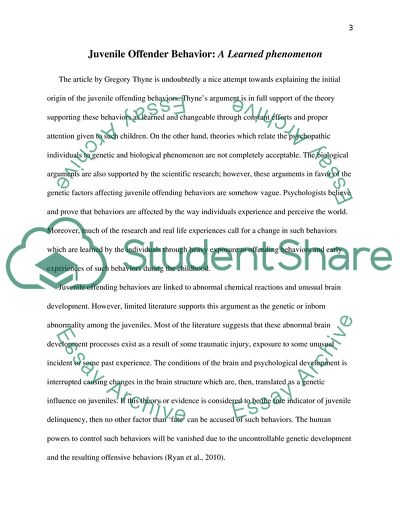Cite this document
(Juvenile Offender Behavior Coursework Example | Topics and Well Written Essays - 1750 words, n.d.)
Juvenile Offender Behavior Coursework Example | Topics and Well Written Essays - 1750 words. https://studentshare.org/psychology/1756073-juvenile-offender-behaviour-learned-or-inherited-is-there-hope-for-change
Juvenile Offender Behavior Coursework Example | Topics and Well Written Essays - 1750 words. https://studentshare.org/psychology/1756073-juvenile-offender-behaviour-learned-or-inherited-is-there-hope-for-change
(Juvenile Offender Behavior Coursework Example | Topics and Well Written Essays - 1750 Words)
Juvenile Offender Behavior Coursework Example | Topics and Well Written Essays - 1750 Words. https://studentshare.org/psychology/1756073-juvenile-offender-behaviour-learned-or-inherited-is-there-hope-for-change.
Juvenile Offender Behavior Coursework Example | Topics and Well Written Essays - 1750 Words. https://studentshare.org/psychology/1756073-juvenile-offender-behaviour-learned-or-inherited-is-there-hope-for-change.
“Juvenile Offender Behavior Coursework Example | Topics and Well Written Essays - 1750 Words”. https://studentshare.org/psychology/1756073-juvenile-offender-behaviour-learned-or-inherited-is-there-hope-for-change.


